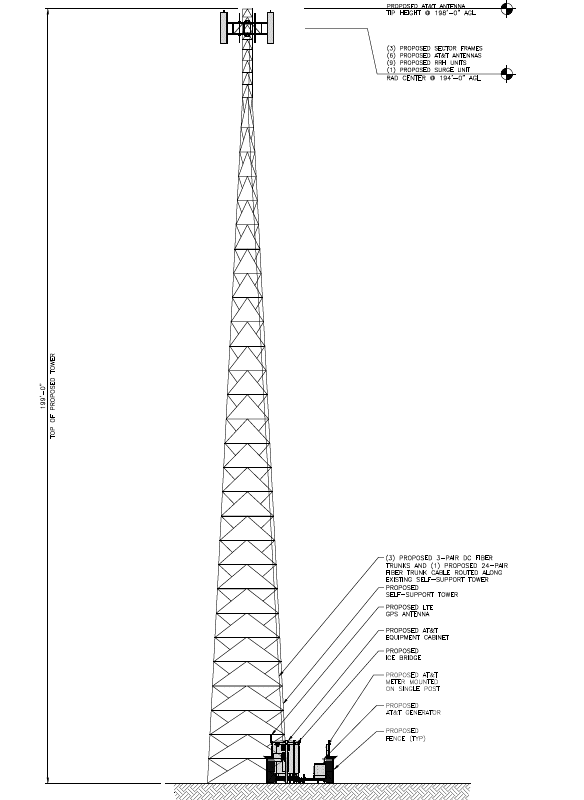
Mobile phone service is coming to the Gunflint Trail, after the Cook County board of commissioners approved a proposal from AT&T on Dec. 22. The tower will be located mid-way up the 57-mile-long Gunflint Trail, near an existing tower. At 200 feet or under, it will not require the disruptive lighting or guy wires that have spurred controversy in similar projects.
The new tower is expected to allow first responders to use a special network dedicated for emergencies, and provide cell service to residents and visitors. Its coverage area will include parts of the Boundary Waters Canoe Area Wilderness.
Most cell service currently drops off less than halfway up the Gunflint Trail, leaving much of the area as a reliable “dead zone” for those looking to escape their devices. Commissioners believe the trade-off for public safety is worthwhile.
“There are people that come to enjoy our wilderness—as you all know—completely unprepared, and oblivious to what it means to be in the woods,” said commissioner Heidi Doo-Kirk, who represents the Gunflint Trail area. “And this is going to make their experience safer. We want everyone who comes to Cook County to leave Cook County alive.”

The tower will provide access to the federally-funded FirstNet system, which lets first responders have priority for service during emergencies. It will also let Cook County sheriff’s deputies access information on their car computers without depending on radio dispatchers.
Doo-Kirk said during the meeting that some Gunflint Trail residents are opposed to the tower, but she emphasized that public safety is the priority. Primary objections included keeping the wilderness and the Gunflint Trail “off the grid” and remote.
Many residents and business-owners have reportedly changed their minds about cell service in recent years, as a valuable connection to the outside world, access to emergency services, and because visitors expect it to be available.
The commissioner pointed to an incident in recent years when someone was stung by a bee and nearly died. “Imagine being 55 miles from an EpiPen,” Doo-Kirk said, referring to the device used to administer adrenaline for dangerous allergic reactions.
The new tower could be built as early as next summer. It will be located near an existing 65-foot tower used by state, local, and federal authorities for radio and other communications. There was not additional space on the existing tower for AT&T’s equipment, and the new tower will have room for two other providers if they wish to rent space.
In 2010, the Friends of the Boundary Waters Wilderness sued to stop a cell tower proposed east of Ely, near Fall Lake, which would be visible and provide service in the Boundary Waters. Notably, the Ely tower was more than twice the height of the tower proposed on the Gunflint Trail. At 450 feet, it required multiple lights and guy wires.
The lights are visible from points in the wilderness, and the lighting and the guy wires required for towers 200 feet or taller present a significant threat to birds.
“Birds have trouble seeing, or at least gauging their distance from, guy wires,” says Duluth bird expert Laura Erickson. “And the lights required by the FAA … seem to attract nocturnal migrants into the lighted space, resulting in collisions with other birds, the tower, or the wires.”
The U.S. Fish and Wildlife Service recommends keeping towers at 199 feet or lower to eliminate the need for guy wires or lights.
While the group won in court, the decision was ultimately overturned by the Court of Appeals and the tower was constructed in 2012.
More information:
- County board approves new tower and the arrival of cell service to the Gunflint Trail – WTIP
- New tower to bring cell service to northern Minnesota’s Gunflint Trail, parts of Boundary Waters – Star Tribune
- FirstNet Authority – Department of Commerce
- Communications Tower Siting, Construction, Operation, and Decommissioning Recommendations – U.S. Fish and Wildlife Service

